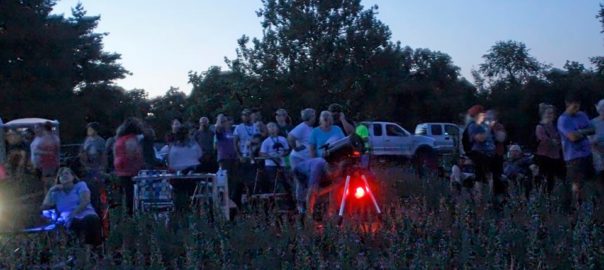What would you do if you planned a star party and almost 10,000 people (9.8 K) said that they were interested in attending?
Branched Oak Observatory Outreach
Michael and I and a number of dedicated observatory Associates have been developing an official 501c3 non-profit observing field and educational complex about 15 miles north of Lincoln, NE called the Branched Oak Observatory (BOO). Besides our events that take place on the grounds, our volunteers also participate in educational outreach at various events, like lectures,
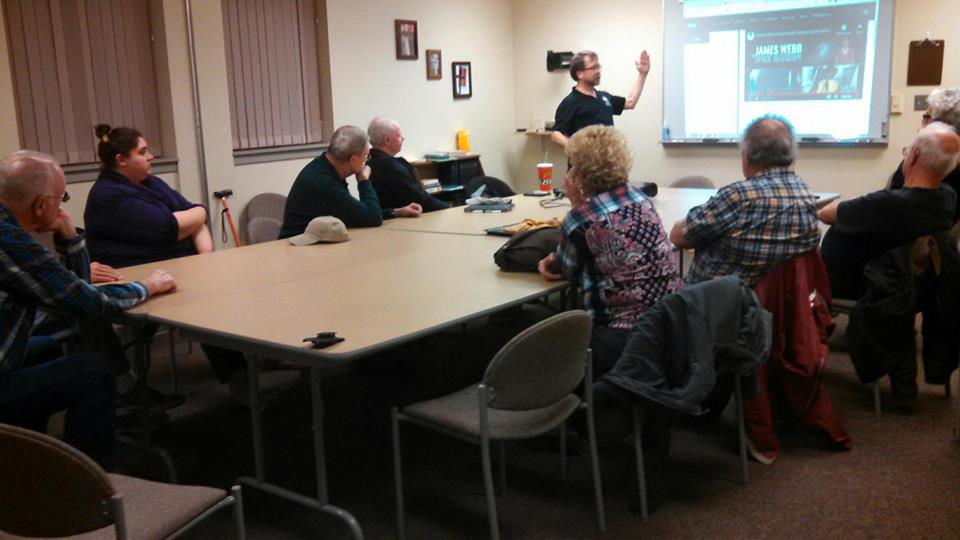
solar viewing,
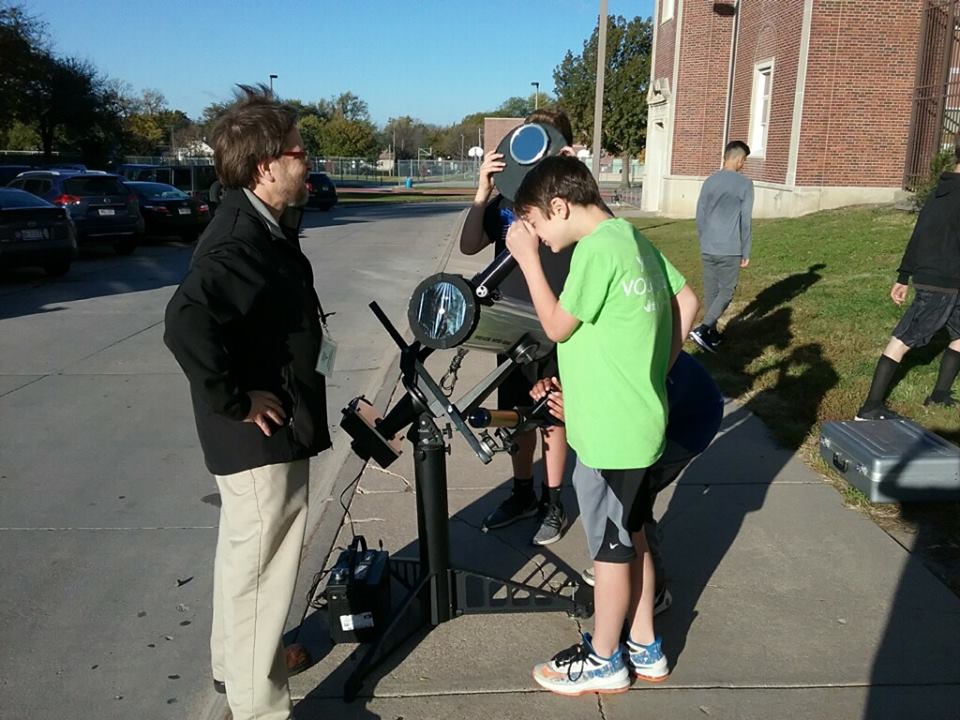
trade shows,
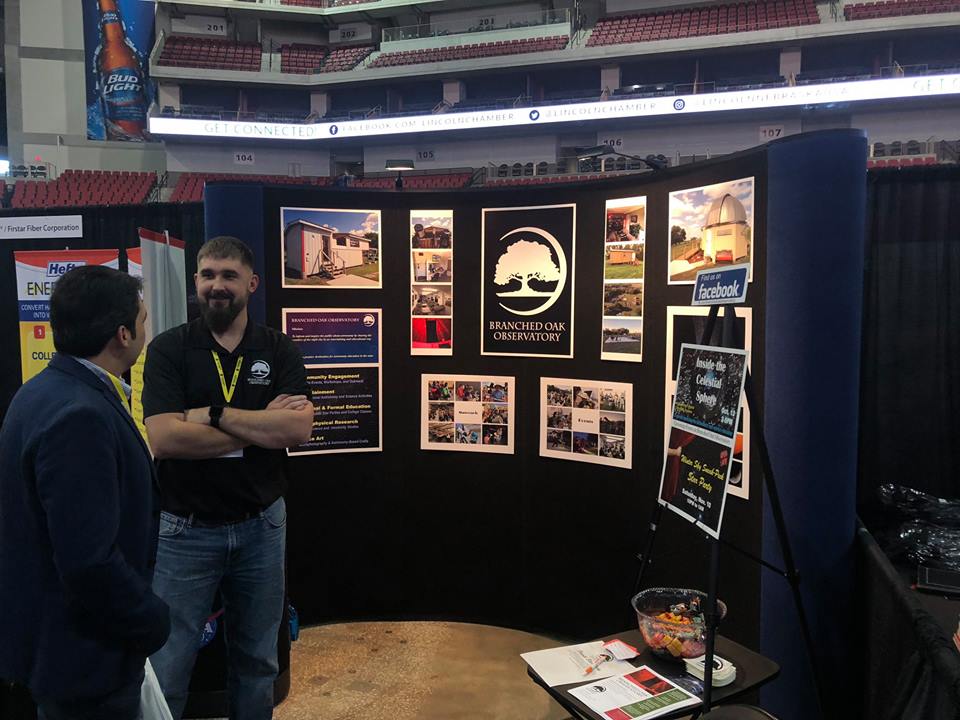
or traditional star parties (night-time telescope observation sessions). We generally have dozens or sometimes up to a hundred participants at these various functions.
Indian Cave State Park Star Party
Branched Oak Observatory was asked to provide an astronomy program with telescopes at the Indian Cave State Park on the Saturday after the 4th of July. So, we rounded up a few volunteers with telescopes from the observatory to participate. An event was posted on Facebook, our primary source of advertising for outreach events. It was named “Cosmic Fireworks” in conjunction with Independence Day. We made sure to clarify that we were not shooting off any actual fireworks in case some people were expecting that.

We still do not know what made the event so attractive, but it evidently struck a chord with many, many people. The state park is in a rural area next to the Missouri River and near Nebraska’s southeastern corner. The location provides a nice, dark sky, but it was over an hour-and-a-half drive from Omaha and over a two-hour drive from Kansas City. The post was shared several times and multiple thousands of people started saying they were interested in coming.
After hyperventilating, we realized that if even a fraction of that number were to come (we were estimating 1 in 10), we needed several more telescopes and astronomy experts to help us. We asked begged our friends at the Omaha Astronomical Society from Omaha and the Prairie Astronomy Club from Lincoln. The invitation was also extended to anyone with a telescope and the time and inclination to share their astronomy knowledge with the general public.
Resulting Numbers of Attendees
Even though part of the park near the river flooded a few days before the event, it did not affect the viewing area and was a successful star party.
We ended up with 19 volunteers and 21 telescopes to show the wonders of the night sky to over 850 people. This turned out to be an excellent ratio. Lines for the telescopes were not too long and there was a nice variety of objects for visitors to view and instruments to use. The responses we received from the guests and the park employees were enthusiastically positive. From casual conversations that night, it seemed that well over half of the people who attended were local to the area and they indicated that they had been yearning for just such a family-friendly educational opportunity.
Photos from the Event
Photo Credits: BOO Associate, Stephanie Wolfe. [Article continues after photos.]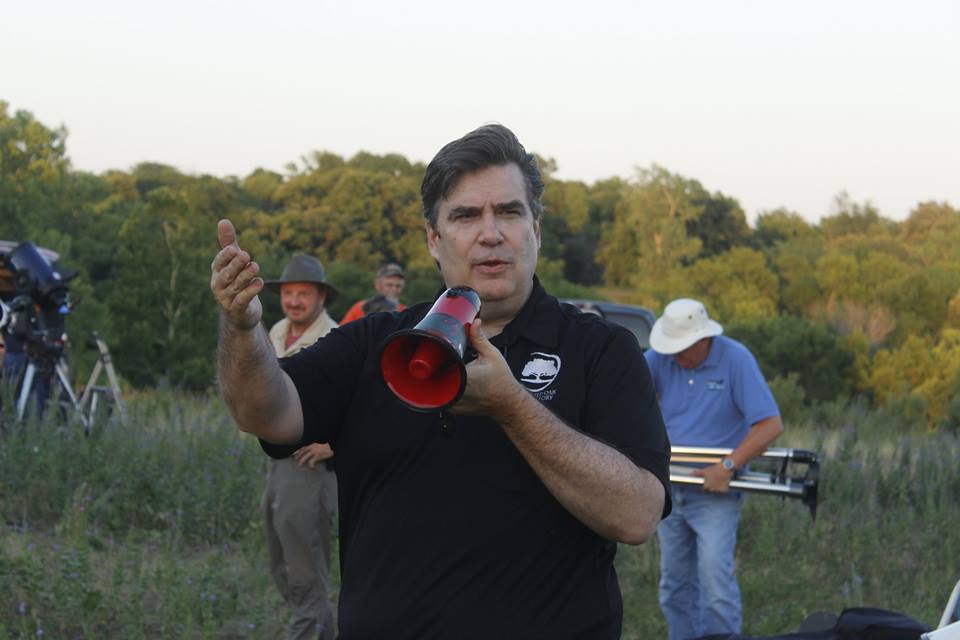
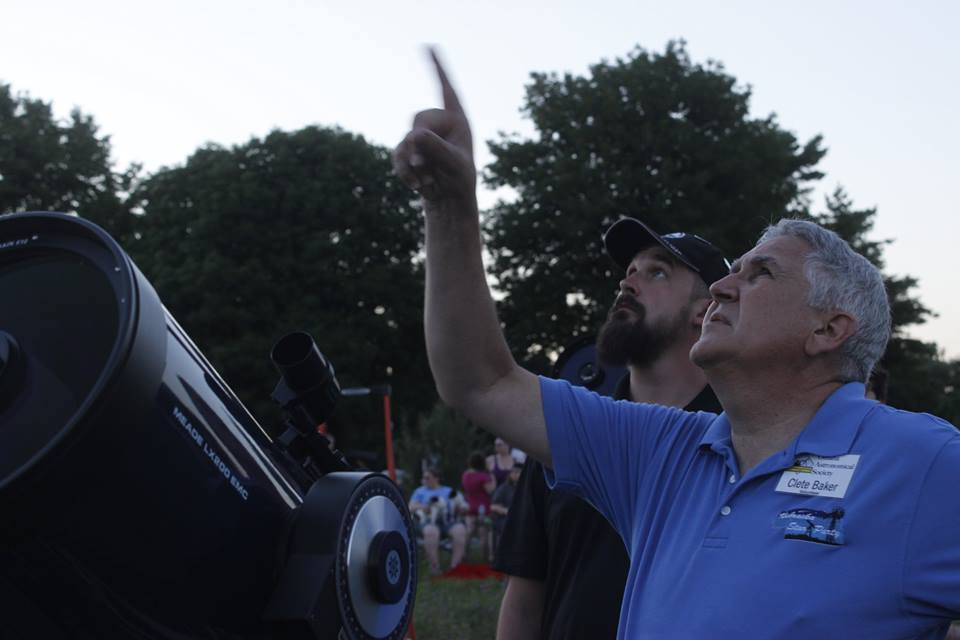
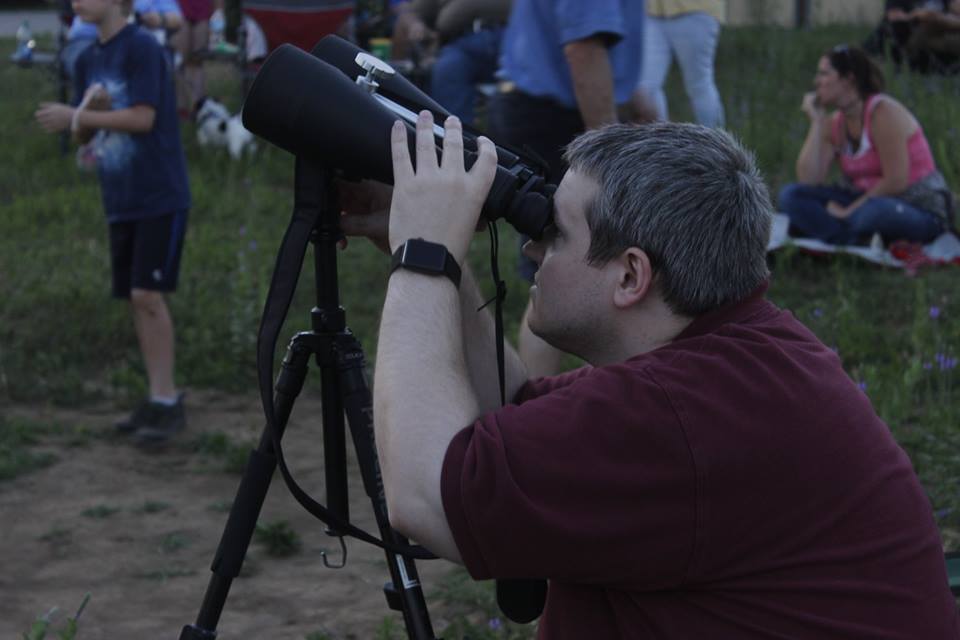
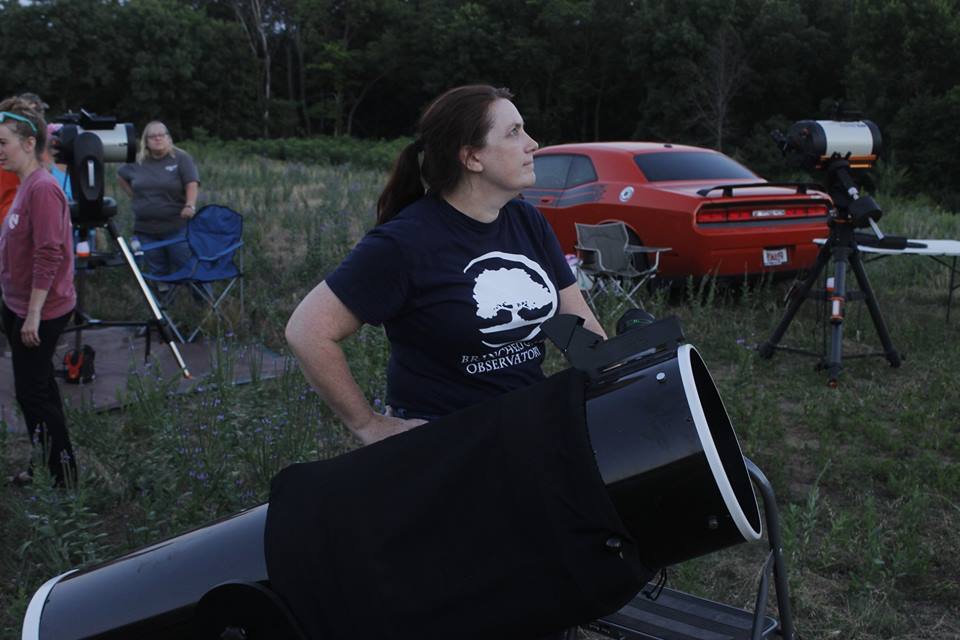
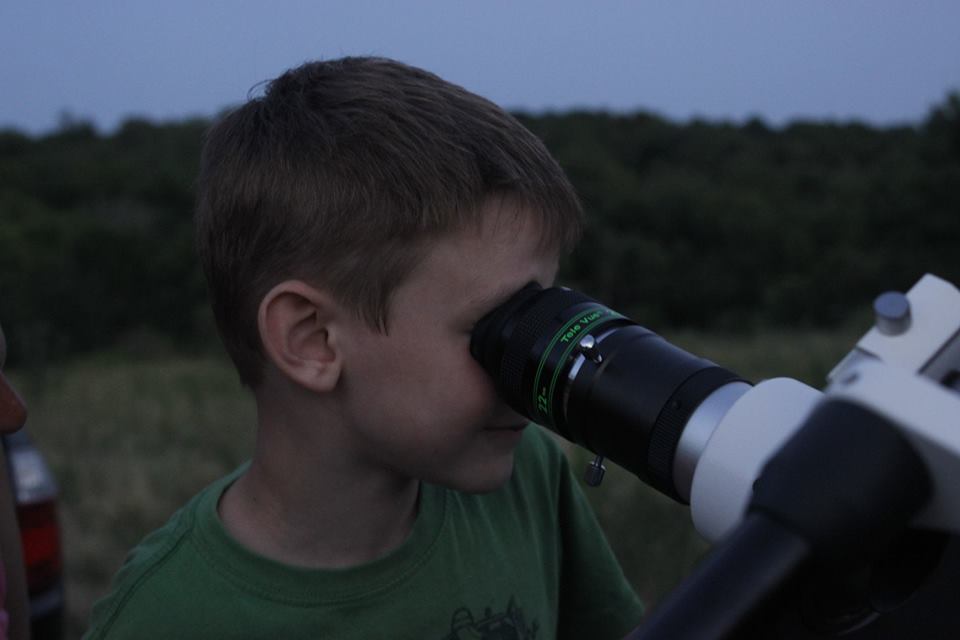
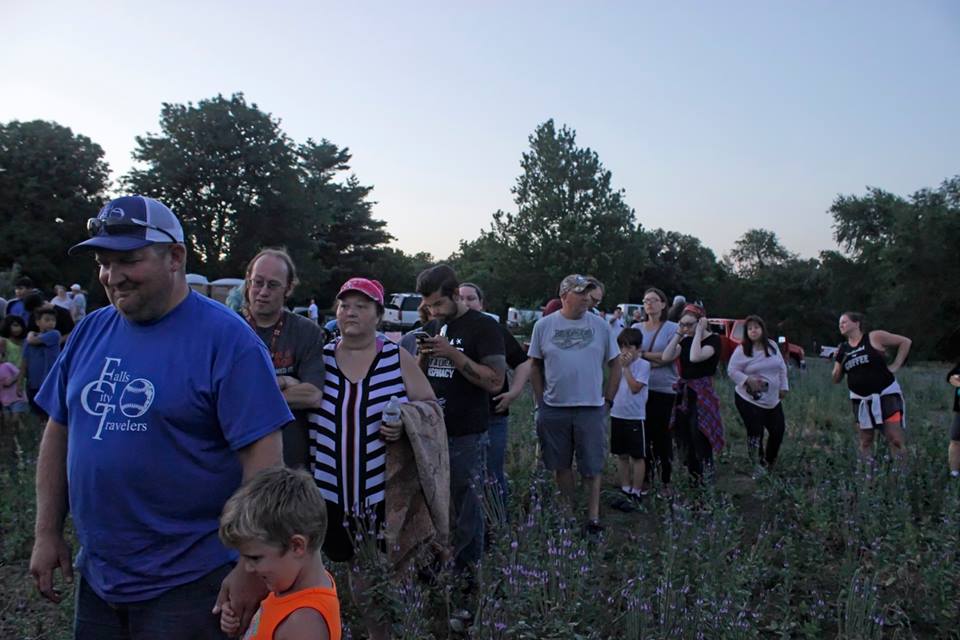
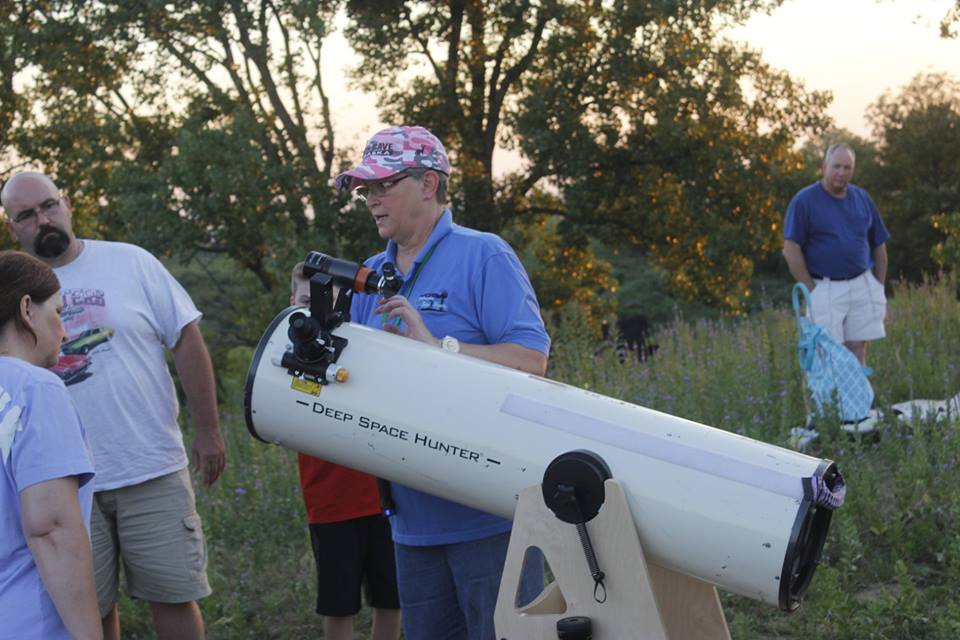
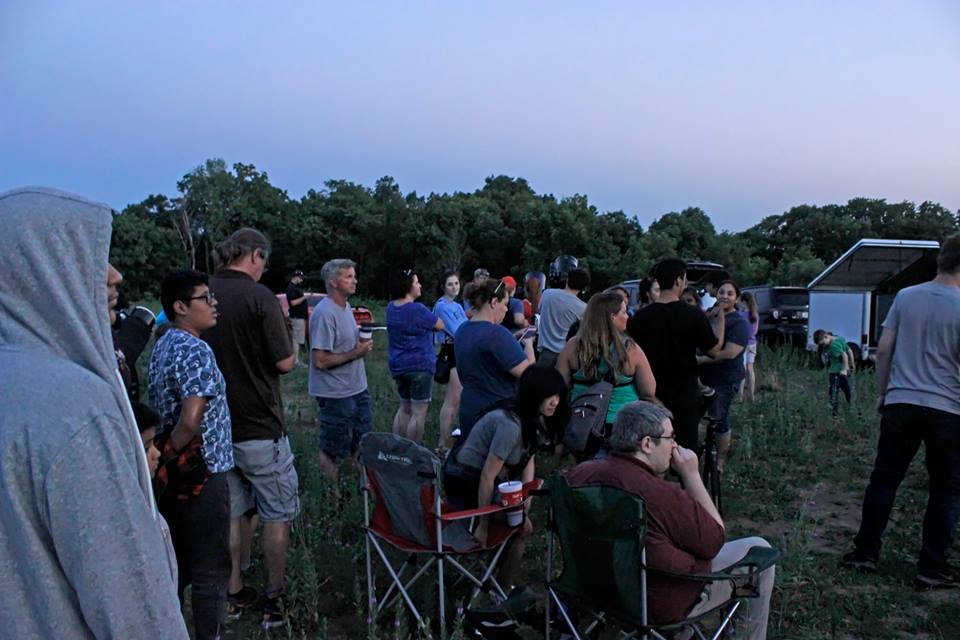

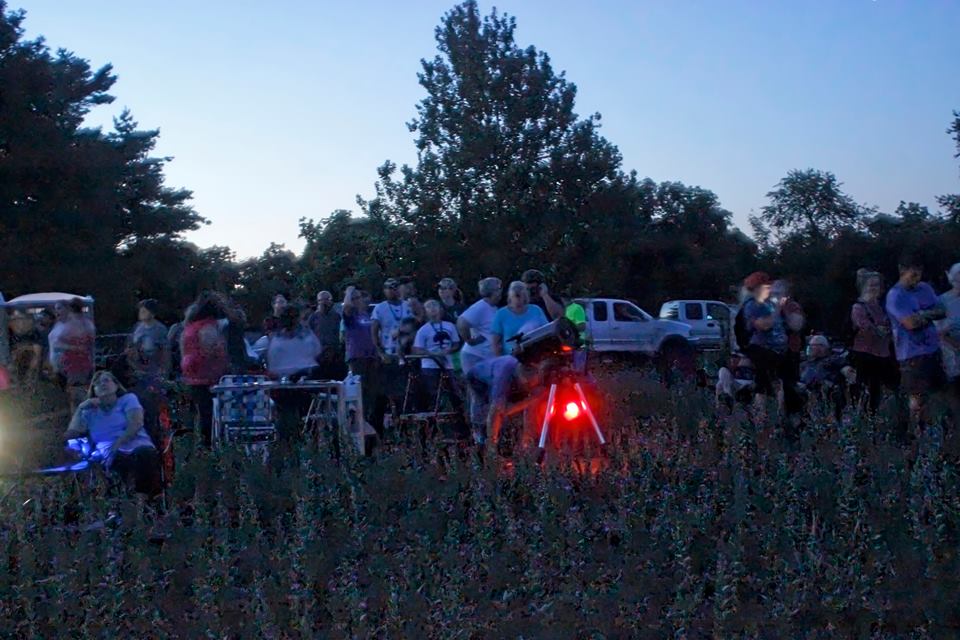
Suggestions for Managing a Large Star Party
These are suggestions for a large single-evening star party as an outreach event for the general public. This is not the same thing as the multi-night dark sky star parties such as the Texas Star Party or the Nebraska Star Party. These would require much more planning in terms of providing food, lodging, children’s activities, and lectures.
In order to have a successful large-scale star party, one with several hundreds of people, it is vitally important to have frequent and clear communication with the people at the venue as well as the volunteers. This includes email, texts, phone calls, and social media posts.
We had small red light lanterns or red LED tea-lights at each of the telescope stations for identification in the dark. We also provided red LED lanyards indicating the Night Sky Docents (astronomy experts). Additionally, we often have a table at the entrance with small pieces of red “tail light tape” available so visitors can cover the white LED on their phones and still have a flashlight to maneuver in the dark without reducing others’ night vision. In reality, not many visitors may make use of this, but it provides a subtle suggestion to the others to NOT use their white lights.
It is common for a group of astronomers to gravitate to the same two or three objects in the sky. It is important, however, to offer a nice variety of planets, galaxies, nebulae, clusters, and double stars for the public to enjoy. With this in mind we like to create a set list of objects for each volunteer to view. This is done with input from the volunteers themselves, what they are comfortable finding and sharing. During the evening of the event, each telescope operator points at a single object for the first hour and, as the sky changes, they move to a second object for the remainder of the night.
This is an example of part of our set list for the first hour of this Summer Season event: Jupiter, Saturn, Mizar & Alcor, Albireo, M81 & M82 galaxies, M27 – the Dumbbell Nebula, M57 – Ring Nebula, M11 – the Wild Duck Cluster, M13 – Hercules Star Cluster, and M51 – the Whirlpool Galaxy.
As it got darker, we could view dimmer objects. Some secondary items included: M4 – Coat Hanger Cluster, M22 – globular cluster, M8 – Lagoon Nebula, M17 – Swan Nebula, M104 – the Sombrero galaxy, and the Leo Triplet.
The Indian Cave State Park personnel provided water, bathroom facilities, parking assistance, and a first aid station. If your venue is not providing some of these, you may need to consider the supplies and necessary volunteers yourself. Regardless, make sure ALL of your volunteers for the evening know where the bathrooms and the first aid stations are located.
Although there was no charge for the star party, each vehicle needed a current state park sticker for entrance. Branched Oak Observatory Associates were able to give away free t-shirts donated by TAG Ink & Thread while supplies lasted and some additional items from NASA Nebraska Space Grant.

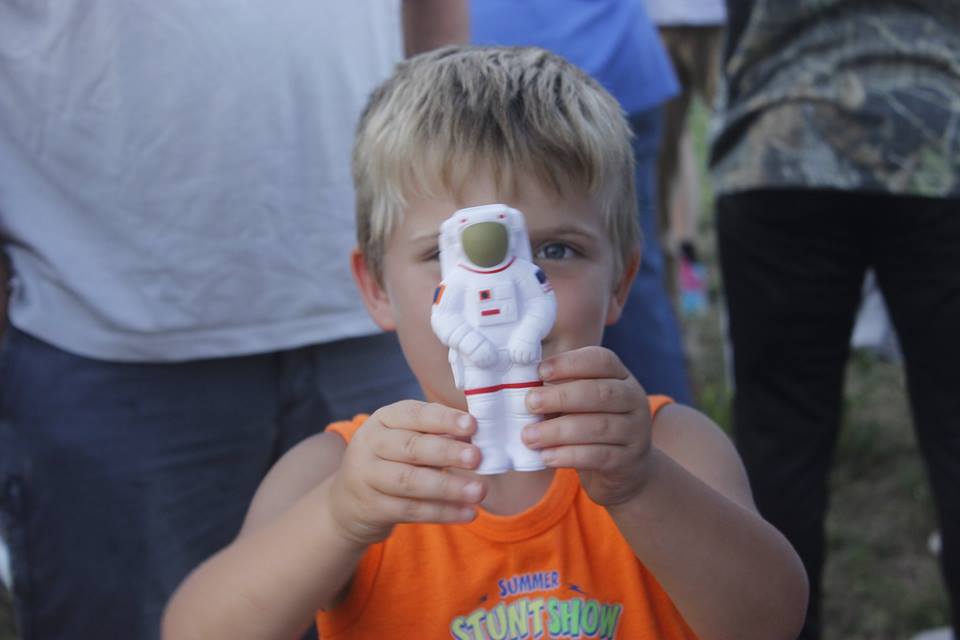
Many families came out before sunset, to get the giveaways, but also to stake out a spot on a blanket or lawn chairs. We had a friendly competition as it started to get dark and the first young guest (under 18) who independently and correctly identified Venus won a small telescope. A popular giveaway at public observatories and star parties is a printed sky map (from skymaps.com) but you MAY NOT want to hand these out until later in the parking area as they are leaving. Because of the dark, the maps probably won’t be used during the event, and very well could end up just littering the grounds if distributed earlier.
As it got a little darker, a night sky docent with a megaphone pointed out constellations with a bright green laser and told some of the mythologies behind them. At the multi-night dark sky star parties, the green laser pointers are frowned upon for use later in the evening because they are too bright and can ruin astrophotography, but at general public outreach star parties, they work great for pointing out constellations and the exact location of deep sky objects being viewed through the telescopes.
Several of our astronomers are veterans and experts in communicating with the general public of all ages. For the new volunteers, we coach them before releasing them into the throngs of people.
Michael and Kendra’s Tips for New Star Party Volunteers
Dress as if it is 10 degrees colder than you think it is going to be. This is true in the spring and summer, but especially true in the fall and winter. If in the summer, remember to bring sunscreen if you are out in the day and insect repellent if you are somewhere with annoying bugs and a water bottle to stay hydrated. Note that you do not want to get too close to the telescopes while applying spray sunscreen or insect repellent because wind can carry the spray to the optics.
Get to the event before it gets dark so you can set up while it is still light. This way, you are not trying to find your way in the dark, especially if you have not been to the venue before.
Include a step ladder in your star party “tool kit.” This is one of the best tips we can give; it will be needed. The best ones have a handle in front so people can hold on to it for stability and it gives their hands something to do rather than touch the telescope.
Develop a script for your main objects. This should be a short description of what they are viewing, what kind of object it is, and why it is interesting. Research a few additional details in case you are asked, like in which constellation it found, how far away it is, and how it developed. You will be repeating this roughly a thousand times.
Try to reduce the unnecessary jargon. You can tailor your script for different age groups, for example, you might tell a very young child that they are looking at a big cloud of dust and gas in space where you might tell a college-level astronomy student that they are looking at a planetary nebula and discuss how that phase fits into stellar evolution.
Reassure people to take their time at the eyepiece. Many times, guests will hurry because they do not want to keep other people waiting. Sometimes the best views are if you wait for a moment for your eyes to adjust or for the atmospheric disturbance to clear.
Tell them to let you know if they do not see the object. If you do not have a clock drive and the object has moved out of the field of view, you do not want several people to pass through without seeing the object. Visitors will often try to be polite and move on, even if they do not see it. How often you need to adjust will depend on the strength of the eyepiece. The higher the magnification, the more often you will need to adjust.
Use your voice in the dark to announce your object. Often, new volunteers are shy and wait for people to come to them. If you want to highlight your object, you can say loudly, “I have the Dumbbell Nebula in this telescope for anyone that wants to view it!” or “I will be switching over to a new object in 10 minutes, so if you wanted to see M13, the Hercules Star Cluster in the 14″ Dobsonian telescope, this is your last call!”
Don’t get irritated if people turn on white lights or touch the eyepiece of your telescope. Learn to gently direct them, “Hold on to the handle of the ladder here and look through the eyepiece here.” You can gesture with a red flashlight.
Explain how to use averted vision for dim objects. You can tell guests to try to look at the center of the field of view out of the corner of their eye. You have more rods, the receptors in the eye that detect the difference between light and dark, around the outside and more cones, the receptors that see color, in the center of your retina. So, sometimes you need to explain how to look at a faint object without looking directly at it.
Treat everyone like a VIP. You do not know when answering a child’s question could spark a lifelong curiosity in the field of science. You do not know when the person at your telescope is going to be a volunteer or a donor to your efforts. You do not know if you are helping create one of the best memories of someone’s life, but treat the interactions as if you are.
